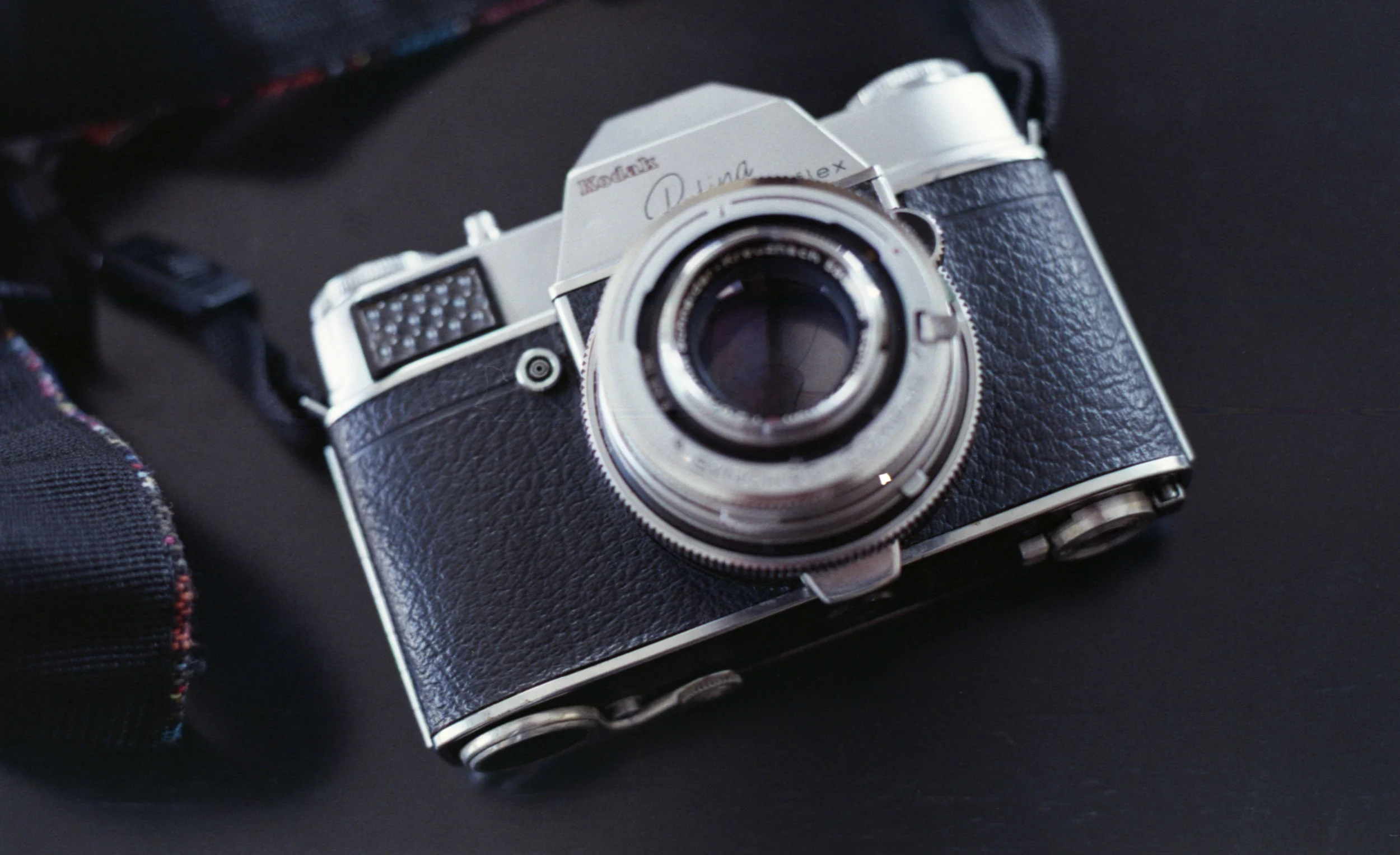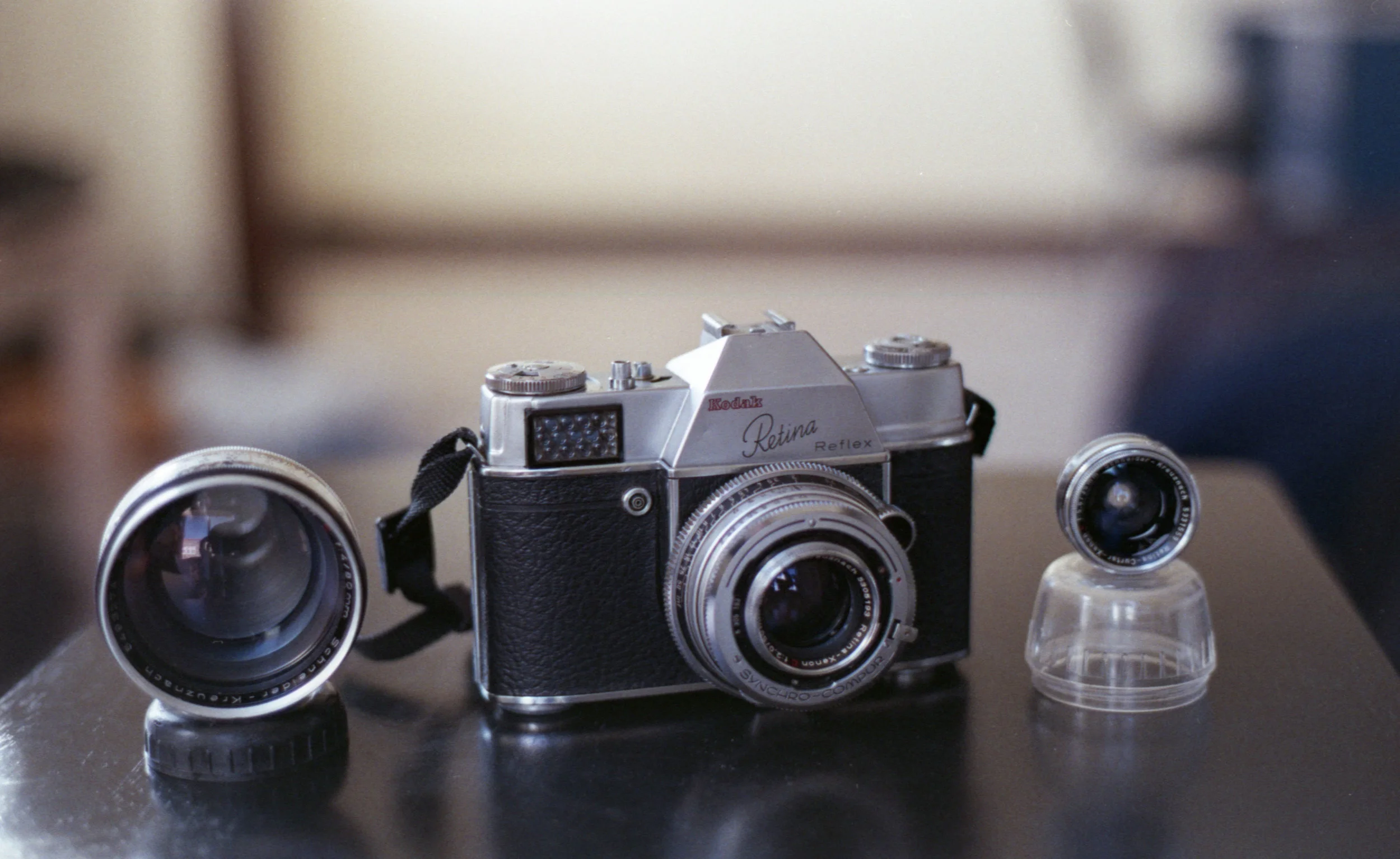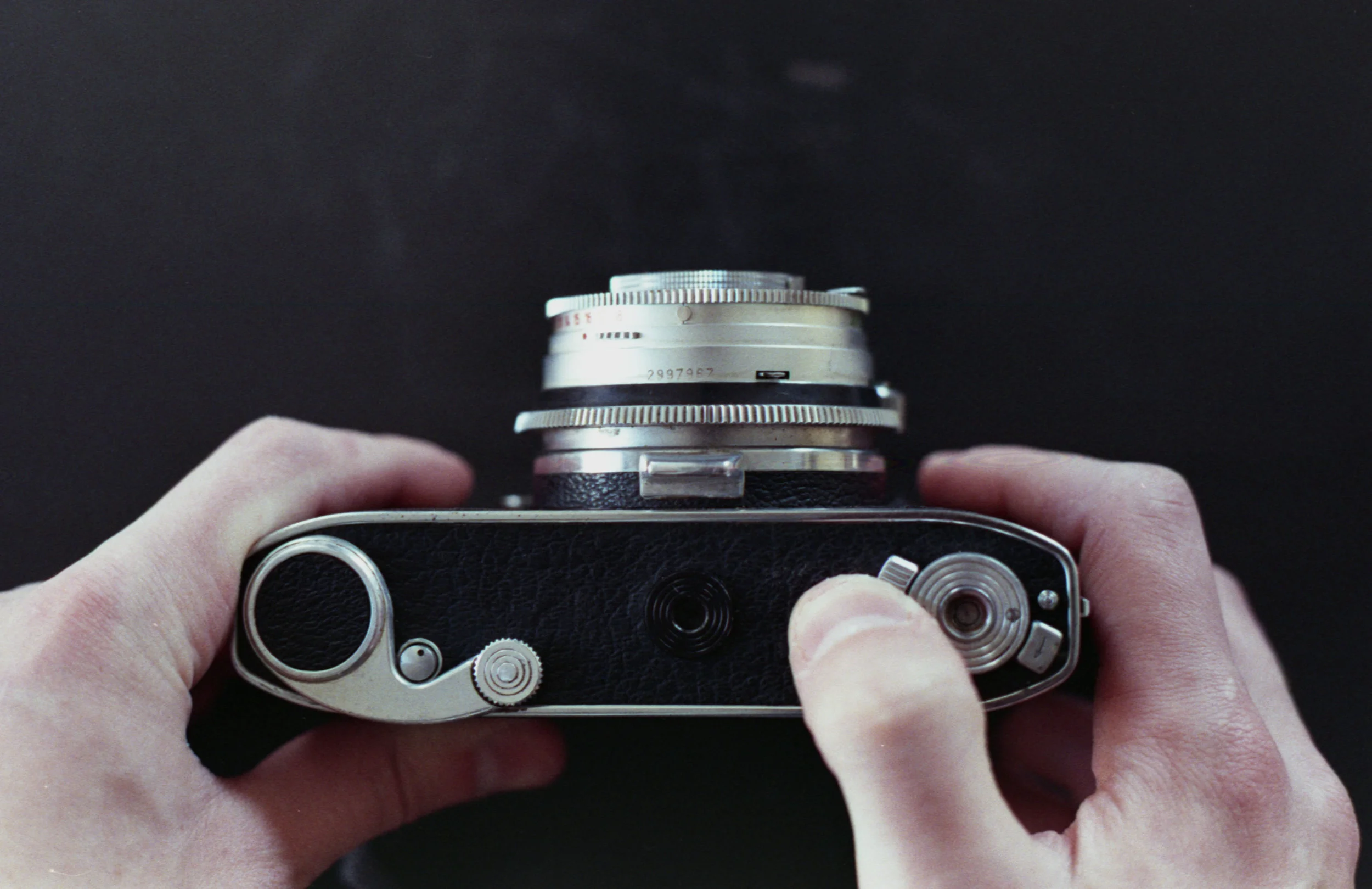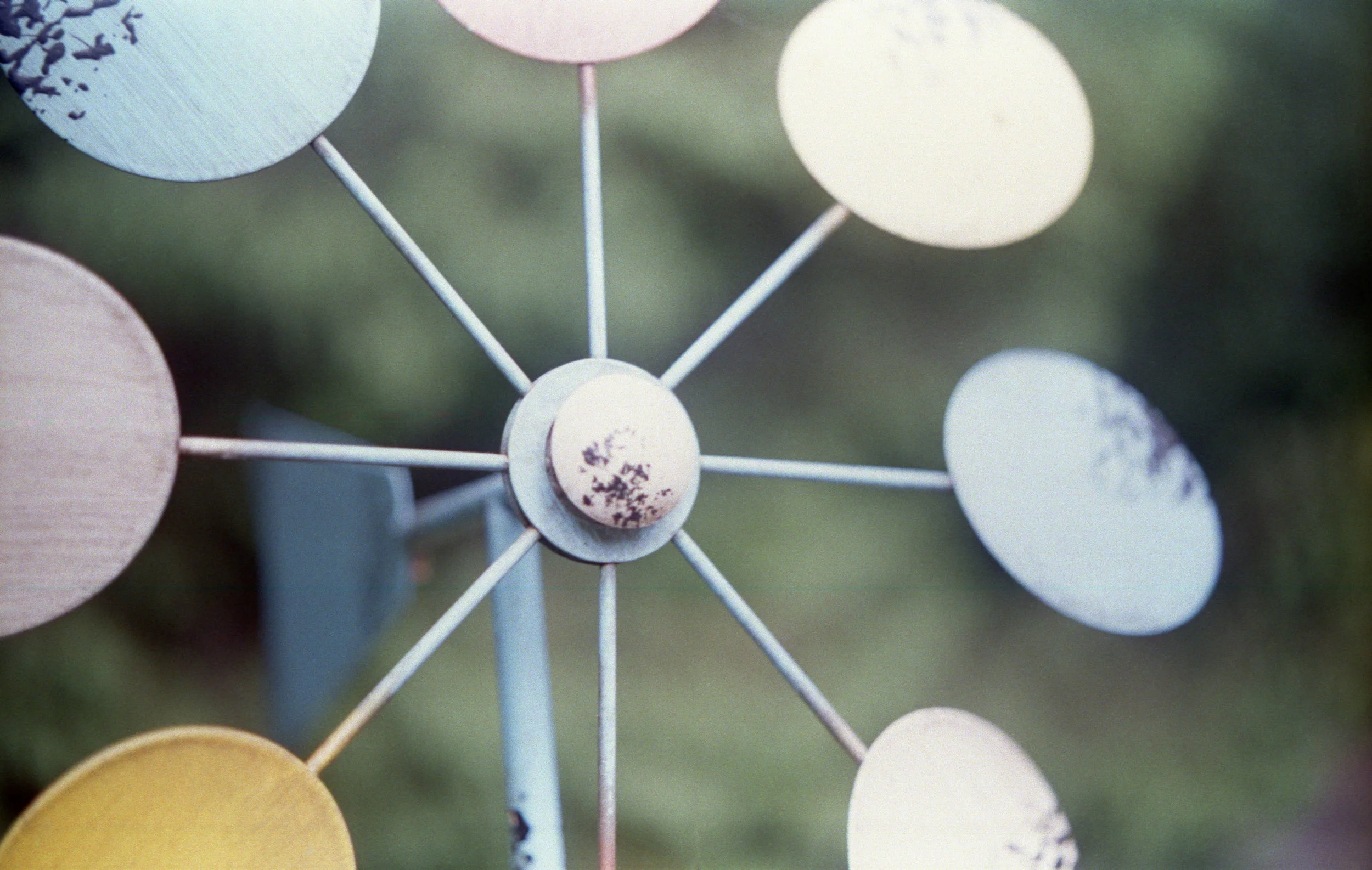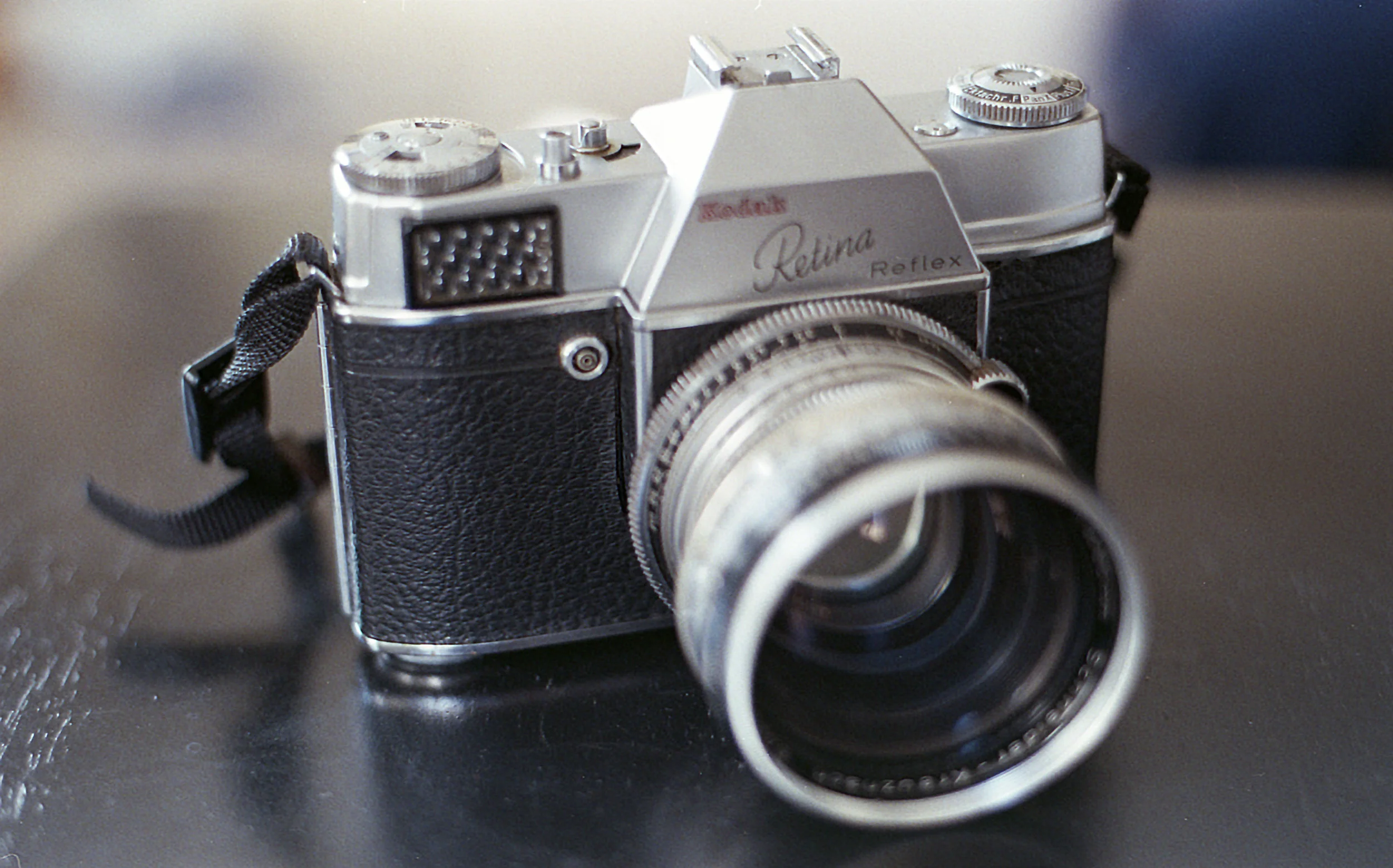March 5th 2019
Kodak Retina Reflex
The very capable Kodak Retina Reflex
The first SLR cameras came to be in the 1950s out of Germany, but the SLR camera was quickly copied and improved upon by Japanese companies. This led to lots of companies creating cameras and ushering the names we all know today into the homes of Americans. Kodak decided to get into that market in mid 1957 with another addition to their famous Retina line of cameras, the Retina Reflex. The Reflex line of cameras continued until the latter half of the 1960s with 4 distinct revisions. Only being around for around a decade, the Retina Reflex series was an expensive but high quality alternative to the other SLR cameras on the market at the time.
The Leaf Shutter SLR
I’m an avid collector of any Retina camera I can get my hands on. I’m also a fanatic for leaf shutter SLR cameras, so when I found out a marriage of the two existed, I had to get my hands on one. The Retina line of cameras was famous for being manufactured in Germany, along with their quality and rugged over engineered design. The designers of the Reflex decided to make all the lenses that worked with the Retina IIIc, work on the Reflex. But this was only for the first model; later models switched up the lens mount and changed the design around a bit. The designers opted for a leaf shutter as well, making this one of the few leaf shutter SLR cameras with interchangeable lenses. But does it really live up to that Retina name and famous quality?
The Kodak Retina Reflex with the optional 80mm (left) and 35mm (right) lenses
The painful Beauty
The Retina Reflex is a leaf shutter SLR, and it’s a very heavy camera. If you know anything about the Retina line of cameras, then you know they are built like tanks and weigh about as much as one. Quality and over engineering was standard practice for the Retina. This is a beautiful camera and the design is ridiculously elegant when you hold one in your hand. Without a doubt, the first thoughts in your mind are quality and beauty when you are holding this camera. The embossed leather back really seals the deal for me, making this one of the better looking cameras for the time. When I say SLR I mean an early SLR where there is no automatic mirror return. This means that you have to wind the shutter to let down the mirror. It’s not really a nuisance to me, but I did notice that sometimes I would bring the camera to my eye forgetting to wind first. Along with that, the shutter cocking lever is oddly placed on the bottom of the camera, like some of the later Retina cameras. But it’s surprisingly in a comfortable place and works pretty well there. The viewfinder is a decent size and has split image focusing which is really nice for the time. The focusing throw on the lens is relatively short as well and feels very nice in practice.
You have standard lens elements behind the shutter, but in front of the shutter is where you have a bayonet mount for interchangeable lenses. All the lenses for the Retina IIIc are compatible with the Reflex, and this is where the fun of the camera starts to come in. The stock lens for the Reflex was the Schneider Xenon 50mm f/2, but the other options you have are a Schneider Curtar 35mm in f/4 or f/5.6, and a Schneider Longar 80mm f/4. But you need to be careful when you use one of these lenses. On the barrel of the other lenses, there is a conversion guide on how the focusing changes, and you need to be aware of this or you will miss the focus! This is a hassle when your trying to do any photography, but not too bad once you shoot for a bit.
There is a cold shoe and a PC sync on the front of the camera for all of you flash people. Being a leaf shutter SLR, you have a max shutter speed of 1/500th but the flash syncs at all speeds which is incredibly useful. The aperture comes in at a decent f/2 to an f/22, not many complaints there until you find out about one of the interesting ‘features’ of this camera. A big movement at the time when this camera was in production was the Exposure Value or EV scale. This scale lets you use the uncoupled light meter on the top of the camera, and dial in an easy to read number for simplicity. To go along with that simplicity, the shutter speed and aperture dials lock into each other so you can easily choose a faster shutter speed or aperture without having to move multiple things around. It’s really not that bad of a system (I would say give it a google if your curious), but de-coupling the aperture from the shutter speed dial is awkward at times. The light meter is fantastic all around though; it’s easy to dial in, easy to read, and mine is still very accurate today.
You open the back of the camera by pushing aside the lever and pushing that small button
There are a few more oddities with this camera, but they don’t really affect the performance I’d say. You have to manually set the fame counter, but remember that it counts down; once you hit zero you will not be able to advance any more, so don’t go thinking your camera has jammed. It’s not that big of a problem if you set it wrong, just set it to whatever number and finish off the roll. Opening the back of the camera is kinda weird too. On the bottom of the camera, you need to push the lever to the side and push in a button to open the back. It’s very awkward to do, especially while you're trying to hold the camera and film while standing.
THE SPECS AND FEATURES
Shutter Speeds - Bulb, 1 sec -1/500
Aperture - f/2 to f/22, dependent on lens max aperture
Meter Type - non coupled selenium cell, EV scale
Shutter - Synchro Compur leaf shutter type
ASA - 5 to 1300
Lens - Kodak Retina bayonet mount, infinity focus to 2.5 feet
STOCK LENS 50mm Schneider-Kreuznach Retina-Xenon C f/2 (3+3 elements in 4 groups)
80mm Schneider-Kreuznach Retina-Longar-Xenon C f/4 (6+3 elements in 6 groups)
35mm Schneider-Kreuznach Retina-Curtar-Xenon C f/4
35mm Schneider-Kreuznach Retina-Curtar-Xenon C f/5.6 (6+3 elements in 6 groups)
Flash Option - PC socket with cold shoe (X or M Sync Option)
Batteries - No batteries needed
Film Type - 35mm
Other Notable Features - film type reminder dial, safety release lever for camera back, self timer, threaded shutter release, end of roll shutter lock
The Experience
I picked this camera up for cheap online because of a sluggish shutter and a dirty viewfinder. I have probably put more hours of work into this camera than any other. Leaf shutter SLR cameras are notorious at being finicky and temperamental, and this camera was no exception. I’ve had to take apart the lens assembly probably over ten times, because of the main issue that this camera and most other leaf shutter cameras have. Oil creep is a pain with all leaf shutter cameras. It will slow down your shutter, and when you think you washed it out enough with naphtha, it will creep right back in. You have to be diligent with the flushing process, it took me nearly a month to get this camera to be reliable. I oiled the rear light blocking plate and flushed the shutter more times then I can count. I’d wait a couple of days and test the shutter again to see if it stayed working, and if not I would flush and exercise the shutter again. I finally had them working in sync after a few weeks of trial and error. But after all the maintenance and periodic upkeep, I was left with a wonderful working example of a Retina Reflex.
The very large 80mm lens attachment for the Retina Reflex
I’ll be frank, I freaking love this camera. I bought the 35mm and 80mm Schneider lenses as well as the external viewfinder for the Retina IIIc so I can have the full set for whichever camera I choose to take. It’s a joy to shoot with, and it’s one of my go to cameras whenever I’m leaving the house. Once you get the EV system down, you find a flow and you really cruse with this camera. The only complaint I have is that it’s a heavy freaking camera, but manageable if you use a padded strap. The picture quality is beyond excellent too; it made me become a huge fan of Schneider lenses and I’m hooked. The colors seem a bit on the warmer side to me and shooting in black and white everything just pops like you wouldn’t believe. I cannot gush about it enough, this is one of my favorite cameras I’ve ever used.
Would I recommend this camera? Yes yes, one thousand times yes. I cannot sing this camera any more praises, it just checks all the boxes for me. It’s quirky, it has interchangeable lenses, it's built like a tank, it looks cool and to top it all off it takes amazing pictures. If you have the money to buy a working Retina Reflex or have the ability to repair one I would not hesitate to pick one up. Kodak Retinas are famous for a reason, and having the SLR version in your lineup is a must have.

